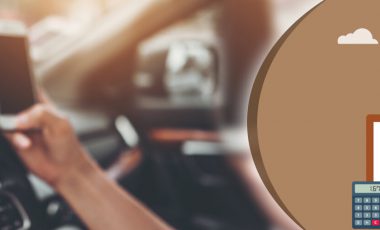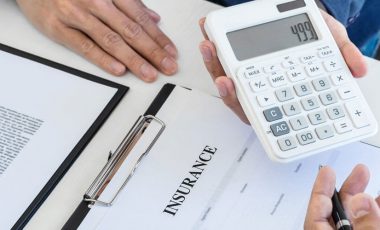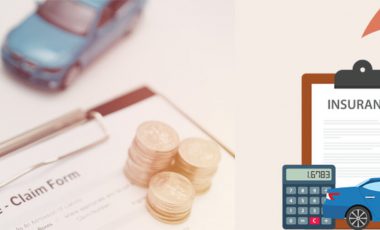Auto Insurance for Self Driving Cars: How It Impacts Your Premiums Rates
The same state insurance rules that apply to conventional automobiles also apply to self-driving cars. The driver of an autonomous car is still in charge of ensuring its security while it is moving down the road. We’re still a long way from genuinely driverless automobiles, even if self-driving car technology has evolved significantly as a result of Tesla, Nissan, Google, and other large businesses entering the market.
You might be wondering as a motorist how self-driving cars might change the insurance sector. How does car insurance cover driverless cars? How may that impact you, the buyer? And does car insurance cover self-driving cars? This blog has all the answers.
Is auto insurance needed for autonomous cars?
Autonomous cars are no different from other cars in the necessity of insurance.
We shouldn’t believe that self-driving cars would never make mistakes since we all know that even human drivers can make blunders. While we don’t need to be concerned about self driving cars becoming wasted or being distracted by their mobile phones while driving, there could be other issues. For instance, the software’s incorrect interpretation of the data it receives might lead to mishaps.
State rules mandate that drivers have autonomous vehicle insurance, and you now need to provide evidence of insurance in order to register your vehicle.
Is insurance cheaper for self-driving cars?
Having a car with autonomous technology has certain benefits, even though self-driving insurance is still in its infancy. The sophistication of autonomous car technology varies by model, but any safety measures can make insurance a little less expensive.
Driver-assistance technologies like lane-departure alerts, collision avoidance, blindside recognition, automated parking, and automatic lighting are probably already part of autonomous technology today.
The cost to repair or replace this technology in the event that the car is damaged could also keep rates higher than for a car without any self-driving features, even though autonomous car insurance that covers driverless cars features may occasionally be less expensive than premiums for other similar newer vehicles.
Who is liable if a self-driving car crashes?
There are similarities and contrasts between seeking compensation for personal injuries sustained in an autonomous car collision and a typical accident. The driver or pedestrian who suffered injuries must be compensated by the person that caused the collision. Yet, unlike a conventional accident, it’s not always simple to determine who—or what—is at fault.
- Car Driver: The driver’s job is to maintain awareness of the surroundings so they can take back control of the car in the event of an emergency. The motorist may be held personally responsible if they are not paying attention and fail to take action to avoid an accident. The same factors that would be considered in a conventional accident might be used here: was the operator acting carelessly, or was the accident unavoidable?
- Car Manufacturer: Similar to ordinary auto accidents, problems might occasionally arise with the vehicle itself. There really wasn’t much the driver could have done to prevent a collision, which may have been caused by things like worn brakes or other technical issues. In certain situations, the injured person may pursue financial compensation from the manufacturer or the producer of the defective auto component that resulted in the accident.
- Technology Designer: A regular automobile doesn’t employ the variety of software and sensors that self-driving cars use. In the event that something goes wrong, sensor system manufacturers and software developers may be held accountable. The development of self driving cars has been delayed significantly by the need to work out how the different systems can identify every possible scenario on the road.
How self driving cars will impact car insurance coverage?
Insurance will be influenced in several ways as driverless cars become more common. Liability insurance will still be necessary, but when manufacturers, suppliers, and perhaps even towns are asked to shoulder the blame for mistakes made, the coverage may vary over time.
According to a RAND paper, cost-benefit analysis may be included in product liability legislation to reduce the cost of claims to manufacturers. Comprehensive coverage, which protects against physical damage from accidents as well as damages from wind, floods, and other natural disasters in addition to theft, is less likely to change but could become less expensive. Because the lower accident frequency rate will affect the possibility of higher costs for replacing or repairing damaged vehicles.
Workers’ compensation claims involving vehicles should decline, as should the percentage of health and disability insurance expenditures connected to vehicle-related collisions.

We generated 12,100,000+ Quotes (...counting), Helping People to Save Money and Time.
Editorial Guidelines: The above is meant as general information to help you understand the different aspects of auto insurance. This information does not refer to any specific auto insurance policy. Coverages and other features vary between insurers, vary by state, and are not available in all states. References to costs of coverages/repair, average or typical premiums, amounts of losses, deductibles, etc., are indicative and may not apply to your situation. We encourage you to speak to our insurance representative and to read your policy contract to fully understand your coverages.
Featured Posts

Cheapest Car Insurance After a DUI: Discover Wallet-Friendly Options

Cheap Liability-Only Car Insurance for 2024: Complete Guide

